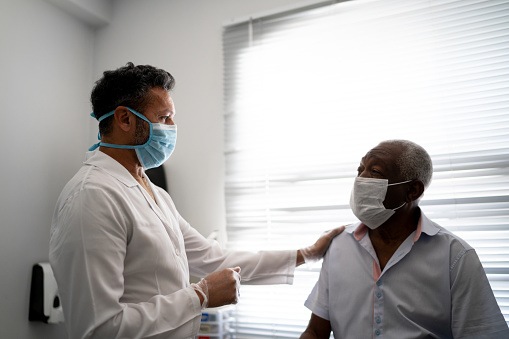
A first-line regimen consisting of once-daily ibrutinib plus venetoclax was associated with high rates of undetectable minimal residual disease (uMRD) in peripheral blood and bone marrow samples of patients with chronic lymphocytic leukemia (CLL) and small lymphocytic leukemia (SLL). Results of the phase II CAPTIVATE study were presented by William Wierda, MD, of the University of Texas MD Anderson Cancer Center in Houston, at the 62nd American Society of Hematology Annual Meeting & Exposition.
The study included patients aged younger than 70 years (median age, 58 years) with previously untreated CLL/SLL. Patients received three cycles of ibrutinib lead-in followed by 12 cycles of ibrutinib 420 mg/day plus venetoclax 400 mg/day.
Those who reached confirmed uMRD after 12 cycles of the combination regimen were randomly assigned to double-blind treatment with either placebo (n=43) or ibrutinib (n=43). Patients who did not reach a confirmed uMRD were randomized to open-label treatment with either ibrutinib (n=31) or continued ibrutinib plus venetoclax (n=32). The primary endpoint was one-year disease-free survival (DFS), defined as survival without progression or MRD relapse.
In patients with confirmed uMRD, there was no difference between the placebo and ibrutinib treatment groups in terms of one-year DFS (95.3% vs. 100%, respectively; P=0.1475). The uMRD rates increased to 57% in peripheral blood and 54% in bone marrow during the overall study period in patients without confirmed uMRD who continued ibrutinib or ibrutinib plus venetoclax. The 30-month progression-free survival rates across all randomized arms were greater than 95%.
Adverse events (AEs) were predominantly grade 1/2 and generally occurred during early cycles of the combination regimen. Only modest differences were observed between the treatment arms in regard to AEs. Across all treated patients and over a median treatment duration of 29 months, the most frequently reported grade 3/4 AEs included neutropenia (36%), hypertension (10%), thrombocytopenia (5%), and diarrhea (5%).







 © 2025 Mashup Media, LLC, a Formedics Property. All Rights Reserved.
© 2025 Mashup Media, LLC, a Formedics Property. All Rights Reserved.